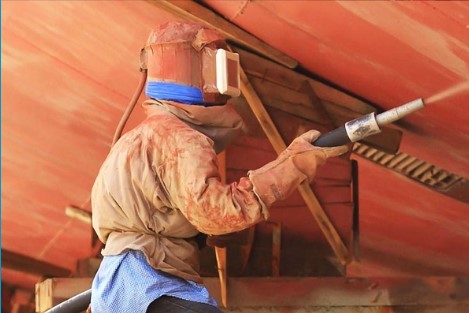When it comes to preparing surfaces for painting or refinishing, the right technique can make all the difference. Whether you're working on a car, a metal structure, or a building exterior, proper surface preparation is essential for achieving a long-lasting and professional finish. Two of the most common methods used are abrasive blasting (also known as sandblasting) and power-washing. While both aim to clean and prepare surfaces, they each have unique benefits depending on your project's needs. Understanding the differences between these two techniques can help you choose the best option for your job. Abrasive blasting is a highly effective method that uses pressurized media—such as sand, glass beads, or steel shot—to remove old paint, rust, and other contaminants from a surface. This process not only cleans but also creates a textured profile that enhances paint adhesion, leading to a more durable and professional result. There are two main types of abrasive blasting: While dry blasting is typically quicker, wet blasting offers a cleaner and safer environment, especially in enclosed spaces or when working near delicate materials. Power-washing, or water blasting, uses high-pressure water to clean surfaces without the need for chemicals. This makes it an eco-friendly choice, especially for projects where environmental impact is a concern. One of the biggest advantages of power-washing is its affordability. Water is much cheaper than abrasive media, and the process is often less labor-intensive. It’s also excellent at removing grease, oil, and other stubborn contaminants that may be difficult to tackle with abrasive methods. Additionally, power-washing is ideal for delicate surfaces, such as wood, concrete, or painted surfaces, as it won’t damage the material unless you use extremely high pressure. It leaves no residue behind, which means you can move directly into the next stage of your project without extra steps. The decision between abrasive blasting and power-washing depends on several factors, including the type of surface, the level of contamination, and the desired finish. If you’re working with metal or need a strong, durable surface profile, abrasive blasting is usually the way to go. However, if you want a gentler, chemical-free approach, power-washing might be the better choice. Regardless of which method you choose, it’s important to work with experienced professionals who understand the nuances of each technique. That’s where Finishing Systems comes in. Finishing Systems has been a trusted name in the finishing solutions industry for over 40 years. We specialize in providing tailored surface preparation services to meet the unique needs of every client. Our team of experts understands the intricacies of both abrasive blasting and power-washing and can help you decide which method is best suited for your project. Whether you're looking to restore a classic car, maintain industrial equipment, or prepare a structure for a fresh coat of paint, we’ve got the knowledge and tools to get the job done right. Contact us today to speak with a specialist and take the first step toward a flawless finish. Suzhou Sikor Industry Co., Ltd. , https://www.sikor-group.com
Abrasive Blasting vs. Power-Washing
June 29, 2022
Abrasive Blasting: A Powerful Surface Preparation Technique
Power-Washing: A Gentle and Eco-Friendly Option
Choosing the Right Method for Your Project
Contact Finishing Systems for Expert Guidance